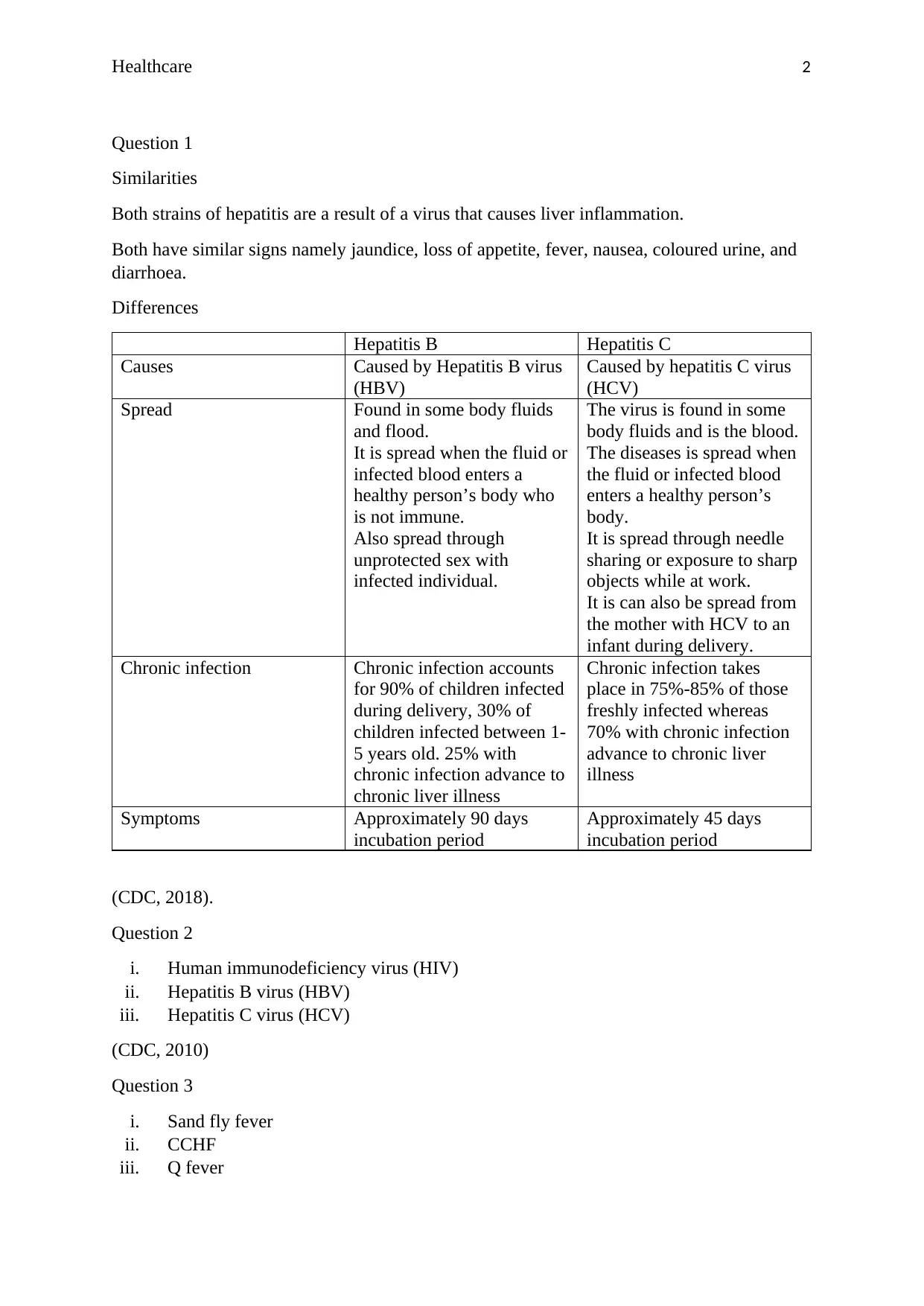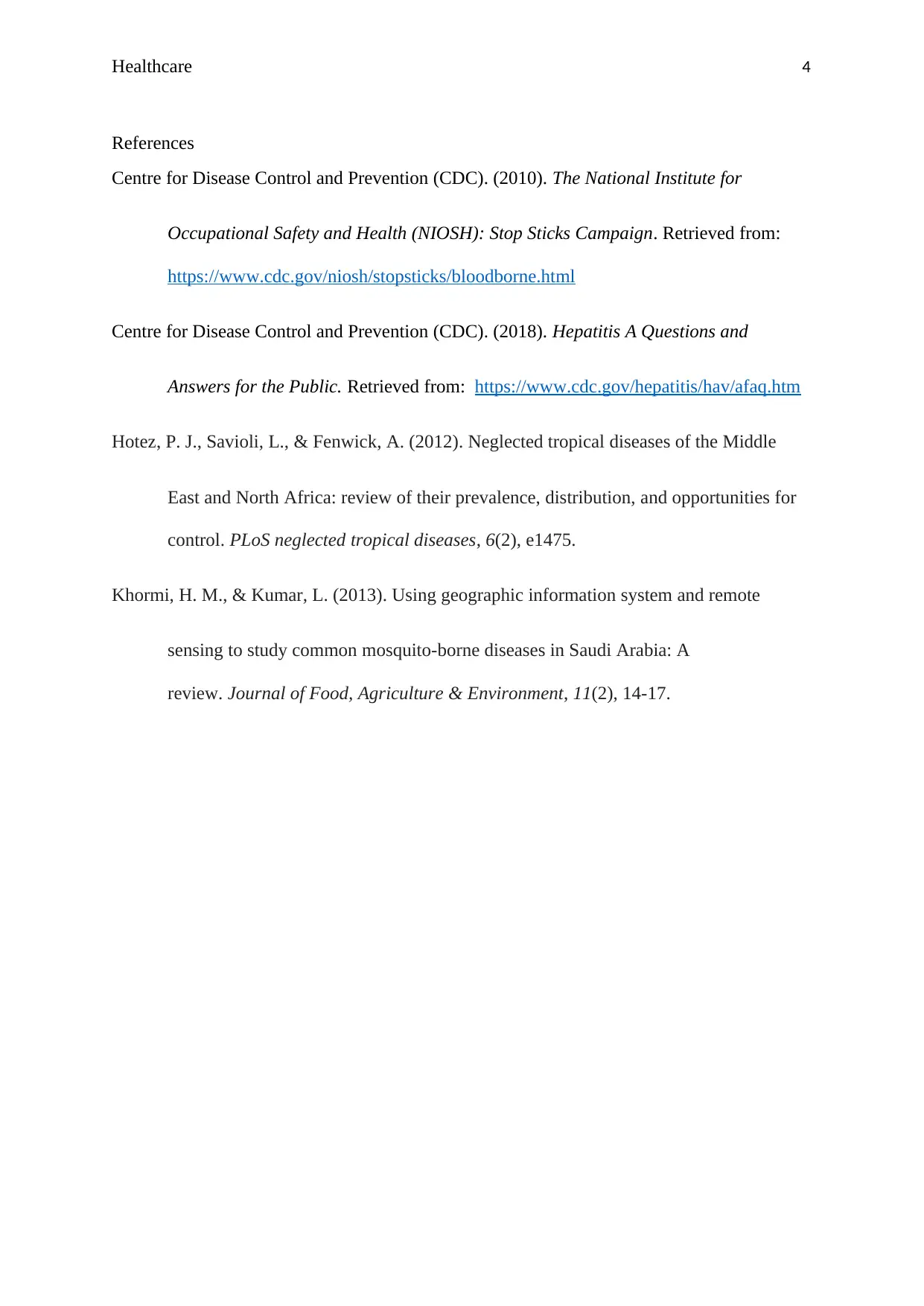Healthcare Report: Hepatitis, Blood-Borne, and Vector-Borne Infections
VerifiedAdded on 2023/04/19
|4
|500
|169
Report
AI Summary
This report addresses several key healthcare topics. It begins by comparing and contrasting hepatitis B and hepatitis C, detailing their similarities (like causing liver inflammation and similar symptoms such as jaundice and fatigue) and differences (such as the specific virus involved and incubation periods). The report identifies common blood-borne infections that concern occupational health specialists, including HIV, Hepatitis B, and Hepatitis C. It also lists common vector-borne infections in Saudi Arabia, such as Sand fly fever, CCHF, Q fever, West Nile virus, Sindbis virus and Visceral leishmaniasis. Finally, the report summarizes eating patterns of Saudi people, though the specific details of these patterns are not fully described in the provided assignment solution. The report uses references from the CDC and other sources to support its findings.
1 out of 4








![[object Object]](/_next/static/media/star-bottom.7253800d.svg)